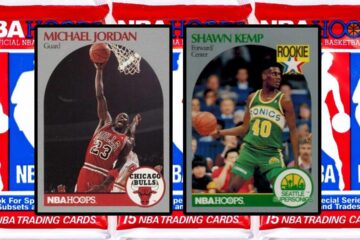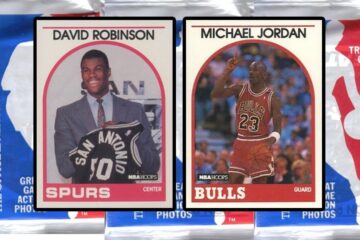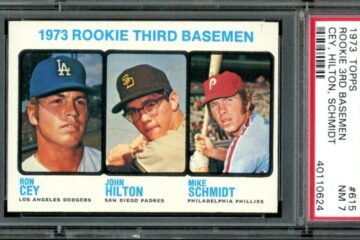In the 1930s, candy companies added trading cards to their packs of chewing gum. It was a gimmick to attract consumers, particularly boys.
And because the gum wasn’t very good, the trading cards were a key selling point. By the 1950s, Topps dominated the field, and they still had a massive market share. Let’s check out the most valuable 1978 Topps baseball cards.
Most Valuable 1978 Topps Baseball Cards
1. 1978 Topps Eddie Murray Baltimore Orioles #36 Baseball Card

Baseball used to be America’s favorite sport before football took over. In terms of TV ratings (in 2022), baseball and basketball are pretty close, but for live events, baseball is still No. 2. So when companies first started adding trading cards to their candy, baseball was the first sport they explored. Today, we’re looking into the top trading cards from 1978.
- Card: Eddie Murray
- Team: Baltimore Orioles
- Value: $8,000
As we go along, we’ll look at important baseball events from that year. We’ll also touch on the biographies and stats of the ball players featured on those cards. Keep in mind that trading cards weren’t just about pitchers and catchers. Some cards featured coaches and managers. And since many of these admin staff were players in their past lives, their stats are listed too.
2. 1978 Topps #562 Glenn Burke PSA 10 23569093

First, let’s discuss the anatomy of a baseball card. Topps came up with the template that other companies followed. It was developed by Sy Berger and Woody Gelman in 1951. The very first cards were pretty sparse. They had the ball player’s picture painted on the front of the card, along with his name, team, logo, and autograph. The back of the card was all stats.
- Card: Glenn Burke
- Team: LA Dodgers
- Value: $19
But these initial notes only included biographical details (birthday, birthplace, height, weight, and a short life history). The sporting world wasn’t yet obsessive about deep stats, so these cards only listed the player’s throws and bats. Sy would approach players and get them to sign on for a year, offering them home goods like carpets and fridges as their payment.
3. 1978 TOPPS #707 Paul Molitor Alan Trammell Rookie RC PSA 9 MINT

As other candy companies got into the fray, the competition for players ramped up, so some started receiving cash. It wasn’t much money; various sources suggest a player got $250 to $500 a year. But once the companies started signing players to exclusive contracts, things went to court and got messy. In the end, Topps bought out Bowman, their main competitor.
- Card: Rookie Shortstops (Mixed)
- Team: Mixed
- Value: $1,800
Bowman had a big reputation for football cards, so when Topps took over, they subsumed that sporting category as well. But right now, we’re interested in their baseball business. The focus was on major league players (MLB), and cards covered both the American League (AL) and the National League (NL). For reference, the AL and NL merged into the MLB in 1903.
4. 1978 Topps #708 Rookie Catchers with Lance Parrish RC PSA 10 Gem Mint
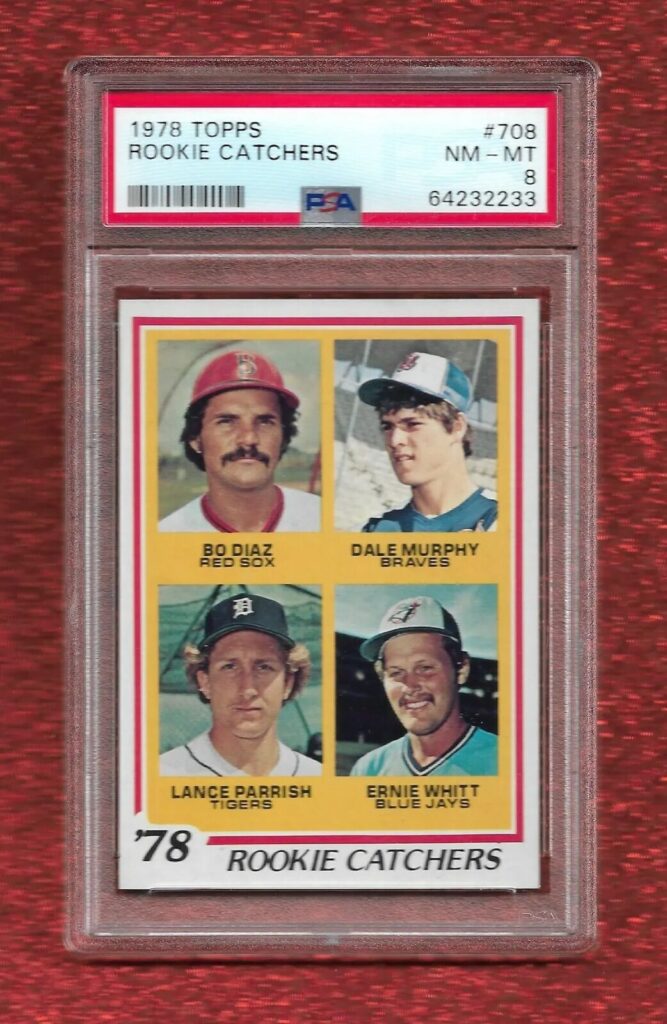
As we mentioned, the earliest Topps baseball cards were done with oil paint. Earlier versions by Allen & Ginter mostly used illustrated portraits, but these cigarette cards were oriented towards pop culture. From the 1870s to the 1940s, these cards featured celebrities and other cultural icons in their cigarette packs. They had a few sports stars too—baseball and boxing.
- Card: Rookie Catchers
- Team: Mixed
- Value: $5250
The cards would also display wildlife, the flags of various countries, and even the odd Native American chief. Other tobacco companies joined in, depicting footballers, cricketers, sailors, ships, ice hockey pros, and the military. Topps revamped and reintroduced these Allen & Ginter cards in 2006. These vintage-styled images featured contemporary sporting stars.
5. 1978 Topps Andre Dawson 72 PSA 10 Rookie Cup PSA 10

While most of these newer A&G Topps cards were for baseball players, you can also find other sports represented (wrestling, soccer, MMA, basketball, softball, beach volleyball, boxing, and car racing). The earlier A&Gs were hand-drawn with a few photos, but the 2006 ones were painted by hand to echo that antique art. A&G-Topps also featured historical figures.
- Card: Andre Dawson
- Team: Montreal Expos
- Value: $149
Some of these cards depicted Billy the Kid or Davy Crockett. Others were DNA hair relic cards. And yes, they had hair in them! The follicle collectibles contained samples from greats like Abraham Lincoln and King George III. Conversely, sports trading cards might have a piece of the player’s uniform or memorabilia. Rip cards had an inner layer with a bonus card.
6. 1978 Topps #245 Rick Burleson Red Sox PSA 10 Gem Mint

Fun fact: Allen & Ginter was the first company to employ female workers! By 1886, they had a factory floor of over 1,000 ladies rolling cigarettes. Oddly, they had offered a prize about a decade earlier, inviting inventors to design an automated rolling machine. James Bonsack succeeded in 1880, but A&G found the machine unreliable and didn’t jump to buy one.
- Card: Rick Burleson
- Team: Boston Red Sox
- Value: $2.50
But as they continued their incidental female empowerment process, one tobacco guru took the plunge and bought an automated roller in 1885. His name was James Duke, and at the time, five tobacco companies dominated the field. By 1890, Duke’s machine had helped him take over the other four, including A&G. This union became the American Tobacco Company.
7. 1978 TOPPS #100 George Brett PSA 9 12489615
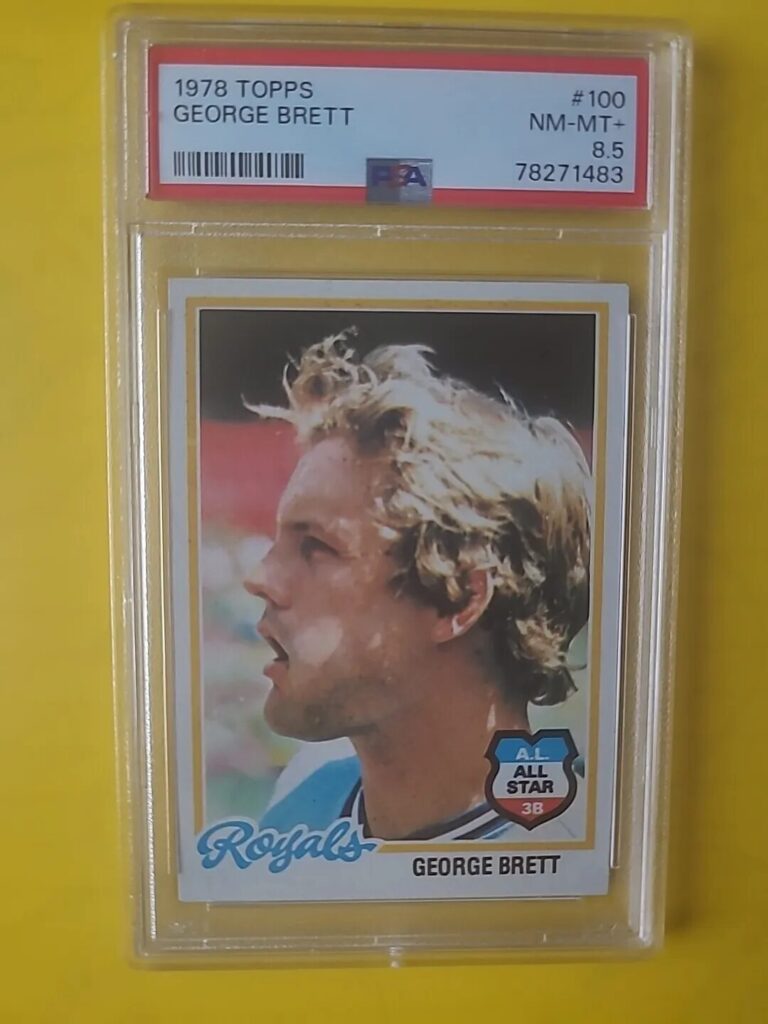
You now know that cigarette cards were the precursor to candy trading cards, but did you know their driving force was functional? Cigarette cards were an advertising tool, but they also served the practical purpose of keeping cigarette boxes stiff and upright. The first cards had silk illustrations glued onto paper backings, but this system was disrupted by WWII.
- Card: George Brett
- Team: Kansas City Royals
- Value: $149
But let’s get back to baseball in 1978. That year, the World Series pitted the New York Yankees against the LA Dodgers, and the Yankees won. They also won the AL East Division in a one-game playoff against the Boston Red Sox, so they were the team to watch! They won the previous World Series—also against the Dodgers—and had 22 championships in total!
8. 1978 Topps #708 Rookie Catchers W/Lance Parrish RC Dale Murphy PSA 10
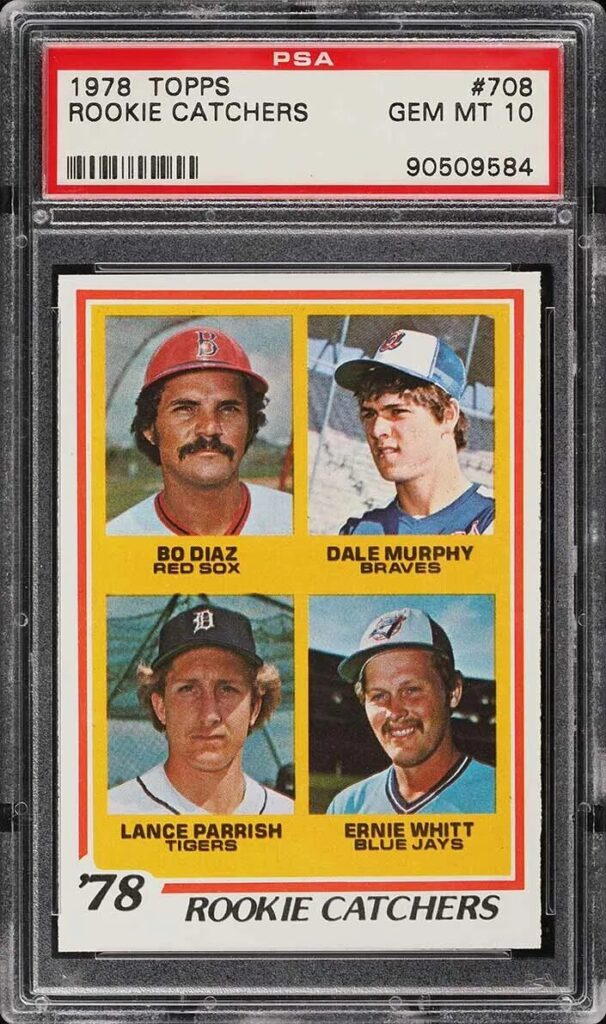
In addition to their championship trophy, some Yankees players got a special mention that year. Ron Guidry won the Cy Young Award as the best pitcher and led the stats in wins and ERAs. Another record that Ron set in 1978? On June 17th, he achieved the most strike-outs in a single game. (18!) This left-handed pitcher also attained the most shutouts in a season—9!
- Card: Rookie Catchers
- Team: 1978
- Value: $5250
You know who else made nine shutouts in a single season? Babe Ruth. Yep! But back to the Yankees. Goose Gossage was the best relief pitcher and was tagged as the Relief Man of the Year. On 1st base, Chris Chambliss got the gold glove, and Graig Nettles got one for 3rd base. Goose Gossage, the touted relief pitcher, was also the top player with 27 saves that year.
9. 1978 Topps Nolan Ryan #400 PSA 9 MINT
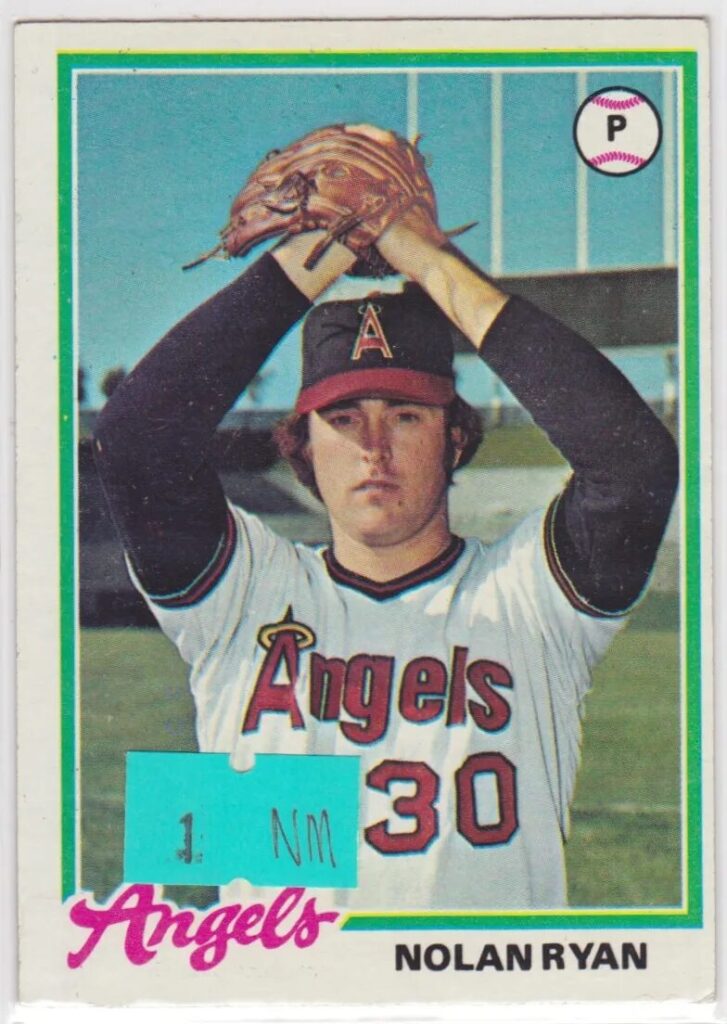
Let’s check out some of the other team’s accomplishments in 1978. Pete Rose of the Cincinnati Reds broke the longest streak of consecutive hits. He landed 44 between June 14th and July 31st, reaching a career milestone of 3,000 hits. On the other end, J. R. Richard of the Houston Astros pitched 303 strikeouts. But he wasn’t the biggest strikeout star that season.
- Card: Nolan Ryan
- Team: California Angels
- Value: $24
While J.R. had the highest body count that season, it was Gaylord Perry who had the biggest smile. On October 1st, this pitcher for the San Diego Padres hit the 3,000-strikeout career milestone. Meanwhile, Will McCovey of the San Francisco Giants hit his 500th home run. In a fitting flow of events, his homer was a solo run on his home turf, the San Diego Stadium.
10. 1978 Topps Robin Yount #173 PSA 10

Curiously, Gaylord had started 1978 on a low note. The Texas Rangers traded him to the Padres, receiving Dave Tomlin and a wad of cash. The Rangers probably felt a twinge when the glory of their former pitcher ended up on the Padres books instead. On a lighter note, a key baseball event in 1978 involved candy bars! Specifically, chocolate, caramel, and peanuts.
- Card: Robin Yount
- Team: Milwaukee Brewers
- Value: $899
These chocolate bars were initially called Bun Bars, and they were launched during the Yankees game of 1976, where fans got them for free. During that 1978 game, Reggie hit a home run with three runners on base. The crowd got so excited that they threw their free candy bars at him in celebration! The popular candy bars were officially rebranded as Reggie Bars.
11. 1978 Topps Dale Murphy Atlanta #708 Rookie Catchers Baseball Card PSA 10
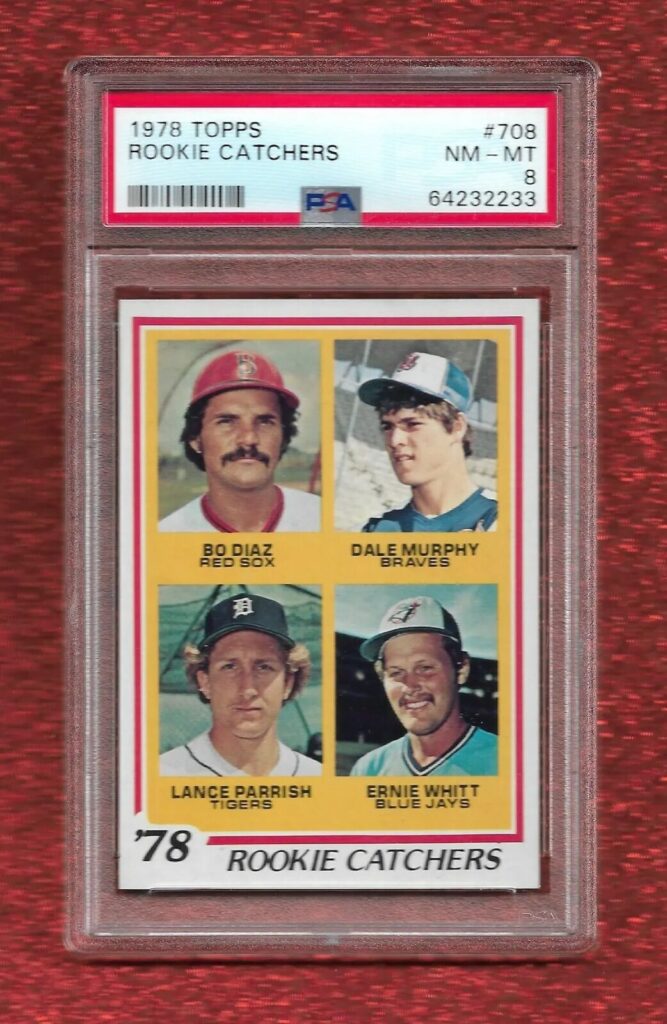
1978 was a high-action year behind the scenes as well. In 1977, Jack McKeon was the manager of the Oakland Athletics, but Bobby Winkles took over, leading the team to the top position. But a year later, he resigned, giving the job back to Jack. Before his management position, Bobby had been fired by the California Angels after the team lost 44 games.
- Card: Rookie Catchers
- Team: Mixed
- Value: $99
The Athletics took him on two weeks later to coach third base from 1974 to 1975 before a stint with the San Francisco Giants. He came back to the Athletics for a one-year managerial term in 1978. The general assumption is that he couldn’t get along with owner Charlie Finley and VP Stanley Burrel. He later moved on to the Chicago White Sox and stayed until 1985.
12. 1978 Topps #36 Eddie Murray PSA 9
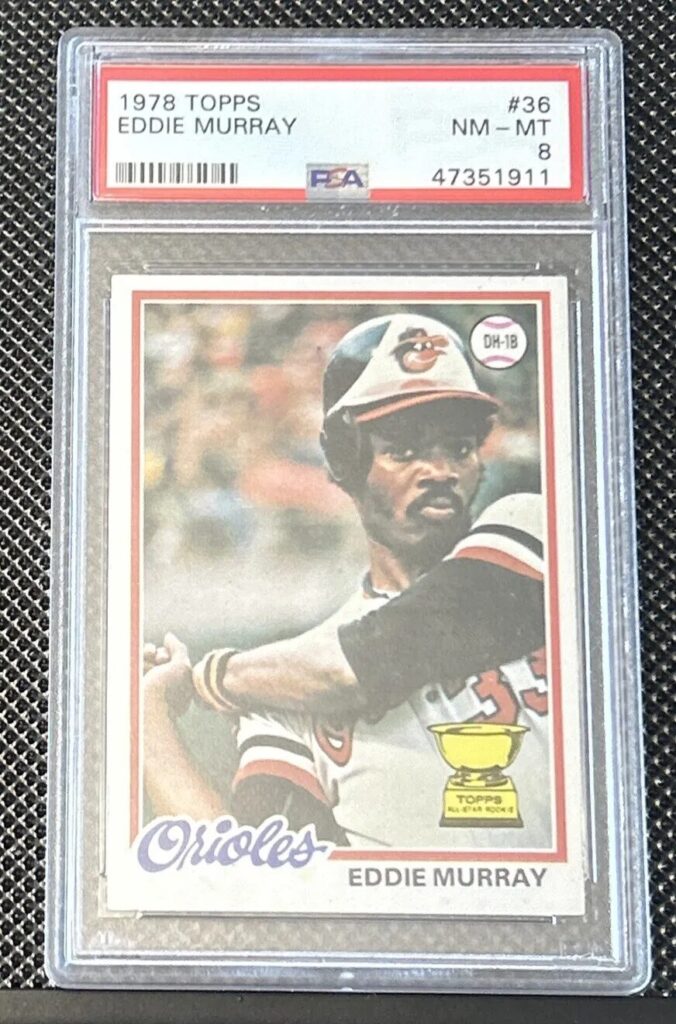
Unless you’re a baseball fan (and even if you are!), you might be confused about the differences between the AL and the NL. It’s a matter of rules. The NL started in 1876, and the AL began in 1901. The NL had 16 teams while the AL had 14 teams, but in 2013, the Houston Astros switched leagues (from the NL Central to the AL West), so they both have 15 teams currently.
- Card: Eddie Murray
- Team: Baltimore Orioles
- Value: $229
There’s a lot of debate about which league is better. The main distinction is that in the AL, team management can pick a different player to replace the pitcher at bat. This happens if their pitcher isn’t a very good hitter, and it results in quicker, more exciting games. But the NL takes a more ‘fair-play’ approach where everyone has to take a turn with the baseball bat.
13. 1978 Topps Baseball Cello Pack Psa 8 Nm/Mt #704 Lou Whitaker (RC) On Top Tough!

As a direct result of this rule, pitchers in the AL never play batting positions. While fans are divided and it’s tough to gauge the two styles of play against each other, the All-Star game is sometimes used to assess the quality of each league. And in 1978, the NL All-Star team beat the AL All-Stars. This battle of the baseballers was introduced in 1933, with 91 games to date.
- Card: Rookie 2nd Baseman
- Team: Mixed
- Value: $125
So far, the AL has won 46 of those games, while the NL has won 43. Two of the games were tied. Outside of this battlefield, the game went on. And although Pete Rose got the 1978 home run spotlight, Johnny Bench achieved a milestone too, hitting his 300th home run in July. He played for the Cincinnati Reds. They still lost the game badly, 12-3, to the New York Mets.
14. 1978 Topps #440 Dave Lopes PSA 10 23421576
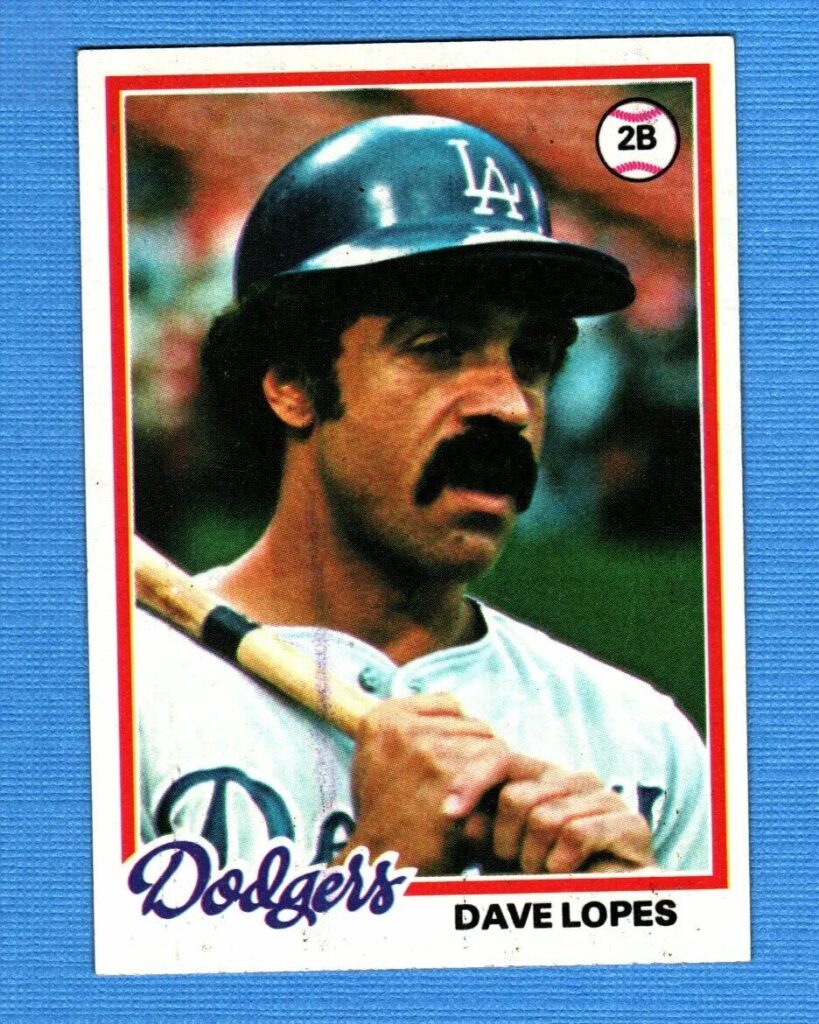
Elsewhere, 1978 saw lots of public disagreement between Yankees manager Billy Martin and his star player, Reggie Jackson. The team owner, George Steinbrenner, typically took Reggie’s side in fights. On July 17th, Billy suspended Reggie for five days, which meant he would miss five games. The mess ended with Billy resigning in a huff just one week after the suspension.
- Card: Dave Lopes
- Team: LA Dodgers
- Value: $1
Billy did come back to the team in 1979, a year earlier than planned. He had been invited back and was to start early in 1980, and the announcement was made just five days after he resigned. Bob Lemon was now the team manager, and he persuaded Billy to return. But Reggie vs. Billy wasn’t the only publicized ball fight that season. The Dodgers had one too!
15. 1978 Topps Baseball #160 Jim Palmer PSA 10 Gem Mint HOF Orioles
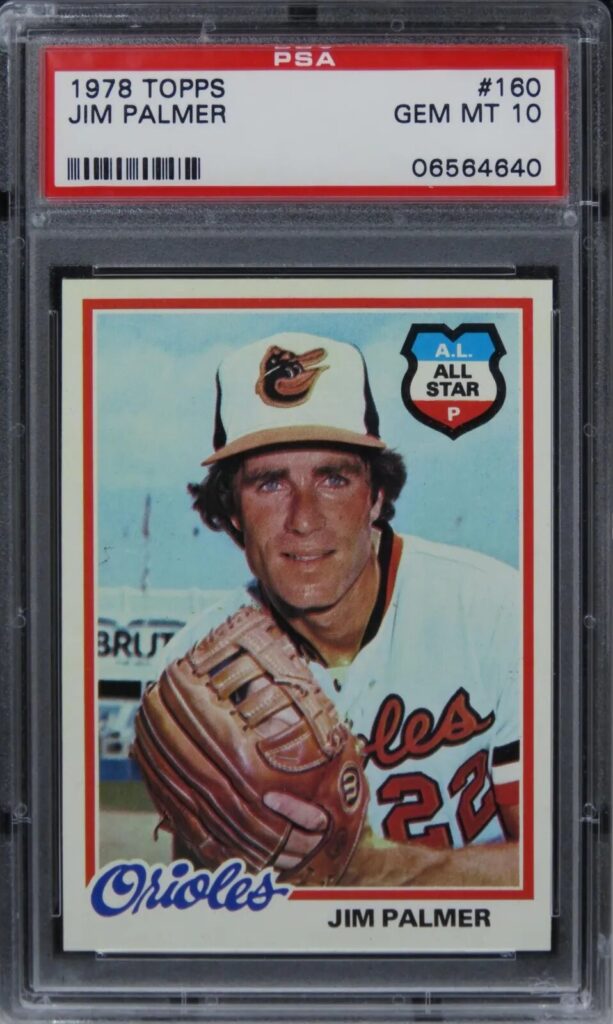
Over in LA, Don Sutton and Steve Garvey had a nasty scuffle in their clubhouse. They weren’t generally friendly, but things had never spilled out this way. Still, baseball is a team sport, and the Dodgers still managed to win their game against the Mets. It was a close call, though, just 5-4. 1978 also saw the Boston Massacre. It’s a lot less bloody than it sounds, thank heavens.
- Card: Jim Palmer
- Team: Baltimore Orioles
- Value: $464
This time, the massacre was a sporting metaphor, describing the 4-game sweep of the New York Yankees against the Boston Red Sox. They were the top two teams in the league, and Boston came off a 4-game lead to lose 42-9 to the Yankees. During these games, the Red Sox lost 7-0, 7-4, 13-2, and 15-3. Ouch! Over in the NL, the Dodgers garnered 3 million stadium fans.
FAQ’s
What is the most valuable baseball card from 1978 Topps?
Most valuable card: 1978 Topps #247 Reggie Jackson rookie card (PSA 10 graded can sell for over $1 million).
Who was a rookie in 1978 baseball?
Rookies in 1978: Many players, including Reggie Jackson, Dave Winfield, and George Brett. See baseball card collecting websites for a full list.
What Topps cards are worth the most?
Most valuable Topps cards: Value depends on player, rarity, condition, and grade. Look for iconic player rookies, short-printed variations, and historically significant cards.
How many cards are in the 1978 Topps baseball card set?
Number of cards in 1978 Topps set: 726 cards.
Do you have any valuable 1978 Topps baseball cards? Show us your photos in the comments!

